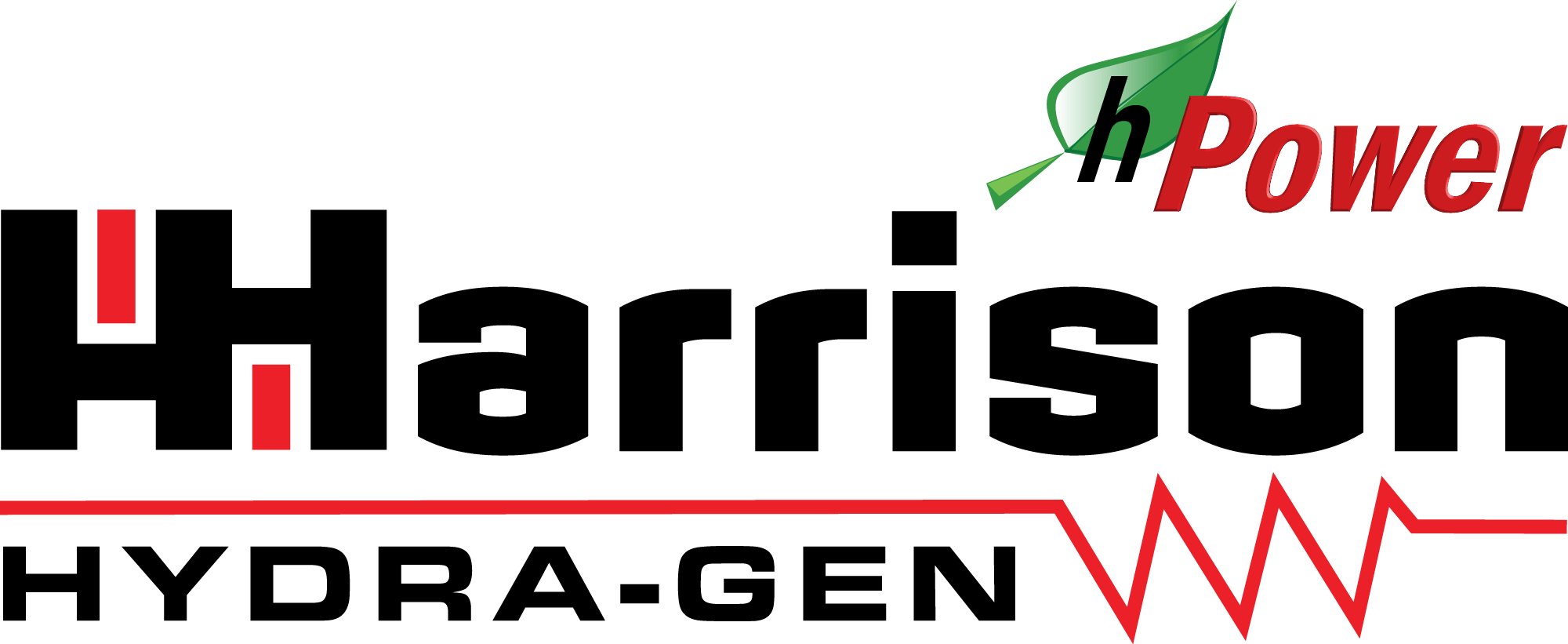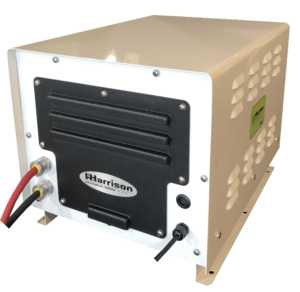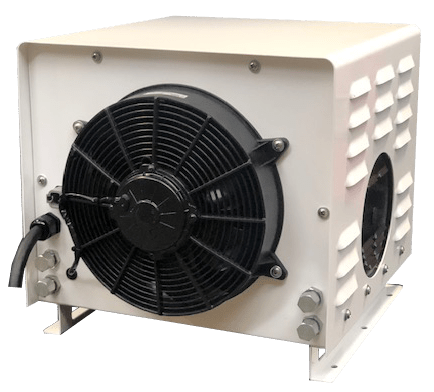Battery Idle Reduction Systems Simplified!
Harrison can provide power for your truck while it is idling with Harrison hydraulic generators, and now when your truck is off, with Harrison hPower Battery Idle Reduction Systems. The Harrison hPower Idle Reduction System provides power for all your DC requirements, while satisfying idle mitigation regulations, by seamlessly integrating with the apparatus chassis drivetrain system and electrical system. With the Harrison hPower Battery Idle Reduction System, fleets can reduce fuel costs, reduce excessive engine wear and scene noise, while also promoting cleaner air for the environment and providing operators with cab comfort without running the vehicle’s engine.
Benefits of hPower
- Extends the life of the Chassis
- Reduces DPF regenerations
- Reduces fuel consumption
- Simplified installation
- Reduces NOx output
- May qualify for federal incentives
The benefits are beyond compelling not only in terms of improved apparatus wear and firefighter comfort but equally so with reduced emissions for the environment.
Potential Fuel Savings
Potential Oil Change Savings
Potential DPF Regen Savings
Potential DPF Service Savings
hPower Product Lineup
BATTERY POWERED
275 amp hour DC battery system
BATTERY POWERED
425 amp hour DC battery system
BATTERY POWERED
12v Built for Compartments
BATTERY POWERED
Custom DC battery system
BATTERY POWERED
275 amp hour Charge PLUS+
STINGER 3.0
hPower Mobile Charging Solution
Idle Reduction Q&A
Why are idle reduction systems necessary?
- Original intent – To provide for less engine run time so that the expensive DPF filters would not need to be replaced as often.
- Current intent – To provide idle-free operation to protect the environment while keeping the ground personnel safe and keeping the truck safe by operating all the safety lights on the truck.
When are idle reduction systems operational?
- Truck not doing the primary function of design – Around 90% of the time the trucks are sitting idling and waiting, or on rescue calls waiting. Unless the truck is engaged in the primary activity of doing work, the idle mitigation controller will shut the truck off and run off the batteries.
- PTO is not engaged – Typically the PTO being engaged is a signal that the truck is going to be providing the primary function. During this time the truck will be running, and the battery system will not be used.
- Interlocks all met for idle power – When the interlocks are all met, signaling the idle mitigation system to turn off the engine and run off the batteries.
- Time delay after interlocks are met – Normally after the interlocks are met, there will be a time delay of 1-5 minutes before the truck turns off and runs off the batteries. This is purposeful to eliminate any annoyance shutdowns.
What types of idle reduction systems are available?
- DC power only; apparatus off – This is the most typical. Only the onboard DC systems will run off the batteries; this includes all identified mandatory lights plus any other DC loads that may be deemed mandatory for your local.
- DC power plus AC power; apparatus off – This is usually accomplished by running an inverter off the batteries to provide some needed AC power when the engine is shut off.
- DC power plus AC power; apparatus on – This can be accomplished with a typical Harrison hydraulic generator and the Harrison hPower. They can work in conjunction with each other and have been designed as a complete package for AC and DC power.
What electrical loads are typically operational during idle reduction?
- NFPA mandated – These are the lights and other loads that are mandated to keep the truck safe when the engine is off and running off battery power of any kind. These are also mandated minimum loads when the truck is also running.
- Discretionary – These will be unique to each situation, just as they are with every hydraulic generator. The more of these loads that are added the faster the battery power will be used. It’s essential to identify only the needed loads with your truck is not doing its primary purpose.
What are the idle reduction systems available?
- ENERGY only; lights only; No HVAC – This would provide DC power for all the NFPA mandated or other industry standards plus your discretionary loads. The more loads, the faster the battery power will be used.
- ENERGY only; lights plus external HVAC – This would be for situations where a rooftop air conditioning/heating unit is installed and runs off the hPower battery system. This will not always be part of the system in many cases because it will draw the batteries’ power down faster and may require a larger battery system.
- ENERGY only; lights plus through the vents HVAC – This is a fully integrated system with a 2nd air conditioning compressor and fuel-fired heater with a recirculation pump. This is the most invasive into your truck because it requires cutting into your air conditioning and heating system and provides the highest complexity.
How does a diesel-powered idle reduction system operate?
- AC power – The diesel engine will have an AC alternator drive directly from the engine when the APU diesel engine is on. Also, when the main truck engine is running, if you have ONLY AC power through the APU, the APU engine will need to run at the same time; not an ideal situation.
- DC power – The diesel engine will have a DC alternator driven directly from the engine when the APU diesel engine is on.
- Idle mitigation – This would be the control system that monitors all the interlocks and activities and determines when it is ok to power up the diesel APU.
- HVAC; external – This would be for running a rooftop air conditioning/heating off the 10K200 APU.
- HVAC; through-the-vents – This is a fully integrated system with a 2nd air conditioning compressor and a fuel-fired heater with a recirculation pump. This is the most invasive into your truck because it requires cutting into your air conditioning and heating system and provides the highest complexity.
How does a battery powered idle reduction system operate?
- Lead-acid vs. L-ion – All of our hPower systems will utilize Li-ion batteries. They have the highest power density and will maintain the charge much longer than lead-acid batteries.
- Different Li-ion formulations – There are several formulations of Li-ion batteries; no one is superior to the other, but depending upon your requirements, one may prove to be a better fit.
- AC power – AC power is not always required, but in instances that it is, an inverter will be added and will run off the L-ion batteries.
- DC power – DC power will come directly from the Li-ion batteries ONLY when the truck engine is shut off. When the truck engine is on, the DC system will draw from the Lead Acid batteries provided by the truck
- HVAC; external – This would be for running a rooftop air conditioning/heating off the hPower battery system.
- HVAC; through-the-vents -This is a fully integrated system with a 2nd air conditioning compressor and a fuel-fired heater with a recirculation pump. This is the most invasive into your truck because it requires cutting into your air conditioning and heating system and provides the highest complexity.
How do you charge your battery idle reduction system when stationary?
- Stationary (Firehouse) – the Harrison hPower system will need to be charged as the batteries are drained down. The primary way of doing this is by directly plugging into Shore Power.
- Shore power auto-eject; 15-amp or 20-amp plug – The hPower battery system comes with several chargers to accommodate the Shore power connections. the 55-amp charger is ideal for the 15-amp Shore power systems; the 90-amp charger is ideal for the 20-amp Shore power systems. The more the amperage, the faster the recharge will be.
- Use the existing auto-eject; slowest charging – Normally the largest charger when you do this will be the 55-amp battery charger.
- Dedicated 2nd auto-eject; fastest charging – In this situation we can use the largest battery charger providing the fastest recharge time. The 90-amp battery charger is used for this.
- Adding wiring for dedicated 2nd auto-eject – Every Idle reduction system will need the means to charge. For the fastest charging, you may need to add a dedicated 2nd Shore power in your firehouse or building. You can use just a single Shore power plug for all your needs, but then the smaller 55-amp charger will be used.
How do you charge your idle reduction system while mobile?
- Hydraulic generator – Charging mobile is not a requirement; you could just charge in the firehouse or other building when stationary. But in cases where a mobile charge mode is desired, your existing Harrison hydraulic generator can be used, or you can use our ECCO rapid AC generator to directly charge the hPower batteries in mobile mode. This is the most efficient and fast mobile charge you can get.
- Alternator; direct – Charging directly from the alternator is possible, but it will reduce the amount available to other DC loads on the truck, so make sure you have adequate alternator size to handle all your DC loads in addition to the hPower charging requirements.
- Alternator; inverter – using an inverter to charge directly though the battery charger included with the hPower system is also a viable option. But keep in mind, it too will require substantial DC power off the alternator, again reducing the amount of DC power available to the rest of the DC system.



